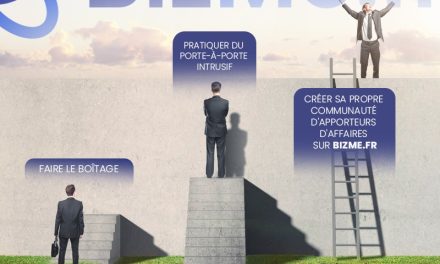When Clara left her agency in Paris, she worried about one thing: how to keep her skills fresh while running a one-person business.
She began small — a monthly webinar, a short course, and weekly peer calls. Within a year her offers changed, clients paid more, and she felt more secure.
This story shows a practical way professional growth becomes part of daily work.
For freelancers in France today, a disciplined mix of formal training and social practice helps you stay ahead in volatile markets. A focused approach boosts both knowledge and practical skills so your career and business stay resilient.
The role you take in setting priorities matters. Blocked time, clear goals, and peer input make progress reliable without overwhelming your schedule. To explore practical steps and examples, see our guide on ongoing skill development for freelancers.
Table of Contents
Key Takeaways
- Blending courses and peer practice helps you keep skills current.
- Small, regular habits compound into meaningful expertise.
- Acting as your own learning leader secures steady progress.
- Structured time for growth protects billable work and results.
- Learning converts into client value, better pricing, and stable revenue.
Why Continuous Learning Matters Today for Independent Professionals in France
For independent professionals, adapting to new tech and rules is part of protecting your income. Markets, platforms, and regulations in France shift rapidly. If your methods lag, you risk slower delivery, rework, or lost contracts.
Adapting to fast-changing markets and technologies
France’s accelerating tech adoption and regulatory shifts force updates to workflows and client offers. Protect your billable work by keeping new skills aligned with sector trends.
Staying employable and marketable in a volatile landscape
Investing a small weekly block of time to refresh methods keeps you visible to clients and competitive against new employees and agencies. The process is more cost-effective than rehiring or scrambling to retrain when a job is lost.
- Business case: ongoing upskilling reduces downtime and preserves revenue.
- Innovation: fresh methods let you propose new approaches and command better fees.
- Measurable goals: track a few quarterly targets to link development to proposals won and customer satisfaction.
- Practical tip: borrow lightweight enterprise habits—peer exchanges, short retrospectives, and cadence-based reviews.
« When people see investment in their growth, retention and performance improve. »
continuous learning: Definitions, Scope, and the Difference from Lifelong Learning
A practical definition helps professionals decide when short training or a lifestyle habit is the right choice. We define continuous learning as a systematic way to gain new knowledge and skills through courses, peer exchanges, and day-to-day practice tied to client work.
How the process works:
- Structured options: courses, certifications, boot camps for fast, job-focused results.
- Social practice: peer reviews, mentoring, quick experiments that embed skills.
- Lifestyle habits: steady reading and reflection that widen your career perspective.
Temporary focus vs. lifelong commitment
Think of the first as a time-bound project to meet a deliverable. The second, lifelong learning, is a voluntary, long-term habit that shapes your professional identity.
Personal and organizational contexts
As an independent professional in France, you act both as learner and micro-organization. You set cadence, choose tools, and document outcomes.
| Approach | Typical goal | Practical example |
|---|---|---|
| Focused training | Deliver a specific project | Analytics boot camp to build a dashboard |
| Social practice | Apply skills fast | Peer review sessions after sprints |
| Lifestyle habit | Broaden perspective | One hour of reading daily |
Process essentials: set the outcome, pick the modality, run a mini-project, and record lessons. A simple matrix linking skills to deliverables helps you price work and justify time spent on growth.
Benefits That Compound: From Skills and Confidence to Innovation and Business Growth

Skill upgrades and practical projects compound into measurable gains for your business. When development links directly to clear goals, payback is fast and tangible.
Individual gains: skills, credentials, and confidence
New skills and certifications shorten delivery cycles and raise quality. You win better fees and handle complex briefs with less risk.
Confidence grows as mastery builds, which encourages more proposals and smarter negotiation.
Organizational impact: performance, productivity, and customer value
Aligned professional development improves productivity and speeds response to client needs. Well-trained professionals create better customer experiences and more repeat business.
Engagement and retention: why a growth culture matters
Employees who see clear career development are 30–50% more likely to stay. For independents, the same idea applies: visible progress reduces burnout and boosts momentum.
- Measure win rate, NPS, and project margin to confirm benefits.
- Map one credential or project per quarter to keep gains compounding.
« Investing in development is often cheaper than rehiring and retraining. »
The Four Pillars of a Learning Culture: Formal, Social, Experiential, and Informal

A practical mix of formal courses, peer work, hands-on projects, and casual input makes growth manageable. For a solo professional in France, this four-part framework turns sporadic training into a durable pattern that supports your job and business.
Formal options
Workshops, MOOCs, and online learning give structured curricula and measurable outcomes. Choose short modules that map directly to a current project or certification need.
Social approaches
Coaching, mentoring, and peer review speed progress by adding feedback and accountability. Regular touchpoints reduce errors and sharpen proposals.
Experiential practice
Run a live project, simulate edge cases, or conduct role plays. Debriefs convert outcomes into playbooks you can reuse across clients.
Informal and self-directed
Queue podcasts, blogs, and micro-experiments into weekly rituals. These low-effort inputs keep your knowledge fresh without heavy time commitments.
« Structure the four pillars to fit your calendar: one formal course, one mentor session, one live project, and one casual channel. »
| Pillar | Typical format | Most valuable outcome |
|---|---|---|
| Formal | Workshops, MOOCs, mobile courses | Verified skills and credentials |
| Social | Coaching, peer groups, mentoring | Faster decision-making and reduced rework |
| Experiential | Projects, simulations, field visits | Practical mastery and reusable playbooks |
| Informal | Podcasts, blogs, reading, experiments | Continuous refresh and idea generation |
Practical stack: one flagship course, one mentor touchpoint, one live project, one informal channel. Track hours, artifacts produced, and errors reduced to confirm development value.
From Plan to Practice: Building a Continuous Learning Environment
Start by making visible commitments: schedule blocks, announce goals, and show up for sessions. When you act first, others follow and the role of development becomes clear.
Leadership as role model
We recommend you set the tone. Book two short blocks per week and mention them in client updates. Visible follow-through signals that training and growth are priorities.
Learning plan and goals
Define quarterly goals tied to business outcomes, then back-cast skills and training needed. Link one leading metric (proposal conversion) and one lagging metric (revenue mix) to each goal.
Time, resources and tools
Protect time, fund one core subscription, and run rotated Lunch & Learns. Use an LMS to centralize resources, track progress, and personalize paths from real performance data.
Step-by-step process
| Step | Action | Outcome |
|---|---|---|
| Assess | Map skills vs. goals | Targeted gaps |
| Implement | Courses, mentoring, projects | Job-ready artifacts |
| Evaluate | KPIs and feedback | Iterated plan |
« Tie every development activity to a measurable business result. »
Build simple rituals: calendar blocks, end-of-week reflections, and periodic audits of resources to keep signal-to-noise high and the learning culture practical.
Real-World Examples and Use Cases to Emulate
Practical case studies make it clear which steps move the needle for teams and solo professionals. Below are compact, actionable examples you can adapt to your practice in France.
Tech company turnaround
What they did: launched an LMS, mentorship pairs, weekly protected hours, and external workshops.
Outcome: +25% productivity, employee ideas doubled, satisfaction +40%.
Pixar University
Cross-disciplinary classes (14 sessions weekly) break silos and fuel creativity. This is a great way to spark new methods you can run as themed sprints.
IBM, PayPal, and MOXA
- IBM: video-based knowledge libraries for fast transfer.
- PayPal: private mentor groups and on-demand courses for social learning.
- MOXA: iSpring authoring + LMS for consistent global training.
« Centralize content, protect time, and pair people with mentors to see measurable gains. »
| Case | Core action | Adaptation for an independent |
|---|---|---|
| Tech turnaround | LMS + mentors + weekly hours | Curate a course list, find one mentor, schedule weekly focus blocks |
| Pixar | Cross-skill classes | Monthly cross-skill module (e.g., storytelling for data) |
| IBM / PayPal / MOXA | Video libraries, social groups, authoring tools | Create short tutorials, a peer group, and a template library for collaborators |
Next step: Read practical tips on creativity and workplace practice in our guide at innovation and creativity.
Conclusion
Short, well-timed actions compound into real advantages for freelancers and micro-businesses.
Pair lifestyle-level lifelong learning with focused training sprints so each quarter produces job-ready assets and measurable progress toward your goals.
Allocate time, define a lean plan, pick a few high-signal resources, and turn new knowledge into client-facing outcomes. Protect your energy: short, consistent sessions beat sporadic marathons and keep engagement high without hurting delivery.
Document takeaways in templates and checklists, use podcasts for micro-updates, and add one or two peers for feedback. Track a few balanced metrics—proposal wins, delivery time, and client satisfaction—to confirm benefits.
Start now: choose one skill, one course, one practice project, and schedule a brief debrief this week.
FAQ
What does continuous learning mean for an independent professional?
Continuous learning refers to the ongoing acquisition of new skills and knowledge through formal courses, social interactions like mentoring, on-the-job projects, and self-directed resources such as podcasts and blogs. For independent professionals, it means regularly updating your expertise to stay competitive, adapt to market shifts, and expand service offerings.
Why is ongoing development important for freelancers and consultants in France?
Ongoing development helps you remain marketable amid rapid technological change and economic shifts. It improves your ability to win contracts, command higher rates, and deliver better client outcomes. It also supports long-term career resilience and reduces the risk of skill obsolescence.
How does continuous learning differ from lifelong learning?
Continuous learning often focuses on targeted, practical upskilling tied to current business needs — courses, certifications, and short programs. Lifelong learning is broader: an enduring mindset that embraces personal growth and diverse knowledge across a whole career. Both complement each other but serve different scopes.
What are the main formats I should consider to develop new skills?
Combine formal options (MOOCs, eLearning, workshops), social approaches (mentoring, peer groups), experiential work (projects, simulations), and informal resources (industry podcasts, blogs, books). A mixed approach accelerates competence and confidence while fitting busy schedules.
How can I create a practical learning plan that fits my consulting business?
Start with a needs assessment: map the skills clients demand and gaps in your portfolio. Set SMART goals, allocate regular time blocks, budget for key subscriptions or courses, and choose tools to track progress. Review results quarterly and iterate based on client feedback and market signals.
What tools help centralize resources and track progress?
Learning management systems (LMS), personal task managers, and microlearning apps are effective. An LMS can centralize content and monitor completion, while calendar blocking and habit apps ensure consistent practice. Pick tools that integrate with your workflow and respect your time.
How much time should I dedicate per week to skill development?
Aim for small, consistent investments — for example, 2–5 hours weekly. Short, focused sessions often yield better retention than occasional long marathons. Reserve personal study, practical application through client work, and one collaborative session a month for peer feedback.
Can small businesses or solo professionals afford to implement these practices?
Yes. Many high-impact options are low-cost or free: industry podcasts, open MOOCs, peer mentoring, and micro-projects. Prioritize based on ROI: target skills that directly increase billable work, improve delivery speed, or open new services.
How does a learning culture reduce turnover and boost engagement in small teams?
When skills growth is supported, employees and collaborators feel valued and see clear career pathways. That raises motivation, improves performance, and lowers turnover. Even small firms can offer coaching, knowledge-sharing sessions, and time for upskilling to achieve these benefits.
Are there real-world examples I can learn from?
Yes — companies like IBM and PayPal scaled video and social learning to share knowledge rapidly. Pixar fosters cross-disciplinary learning to drive creativity. Smaller firms have seen productivity and idea generation improve by introducing an LMS and mentoring. Use these cases as templates for what could work in your practice.





